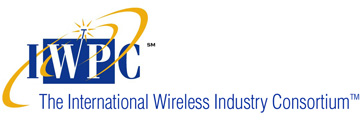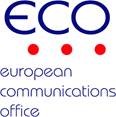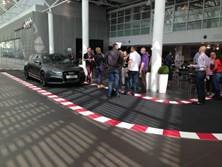When
March 14 - 17, 2016
Where
NEW VENUE
Hotel Vier Jahreszeiten Kempinski Munchen
Munich, Germany
Register
Limited to 100 seats
First Registered, First Served!
Attendance open All IWPC Members
Please note that the workshop venue has changed and will now be held at:
Introduction
Today’s vehicles are being equipped with a host of technologies to enhance driver comfort and safety. As vehicle manufacturers continue their journey towards highly automated driving and autonomous vehicles, the industry looks to the fusion of data from radar, vision and lidar systems to provide an optimal 360 degree perspective. Radar is considered to be an indispensable building block within active safety systems and autonomous driving vehicles.
Workshop Goals
- Assess the present state and future trends in active safety and highly automated driving technology
- Create an open forum for the global automotive radar community to discuss and debate advanced safety requirements, sensor technology opportunities, challenges, limitations and trade-offs
- Develop mutual understanding and build community awareness across active safety eco-system
- Review state-of-the-art semiconductor, signal processing and sensor technology development
Agenda
|
DAY 1 Monday March 14 1900 |
Evening Reception and Registration
|
Hotel Vier Jahreszeiten
|
||||||||
|
DAY 2 Tuesday March 15 0700
|
Coffee and Registration |
Hotel Vier Jahreszeiten
|
||||||||
|
0800 |
Welcomes and Introductions |
|
||||||||
|
0830 |
Keynote and Workshop Goals
|
On the Way Towards Highly Automated Driving
Head Development Driver Assistance Systems
|
||||||||
|
1000 |
Networking Break |
|
||||||||
|
1040 |
Auto OEM Perspectives
|
Challenges for Future Automotive Radar Systems from OEM Perspective
Project Manager
Radar for Autonomous Driving
Manager, Active Sensors
|
||||||||
|
1230 |
Networking Lunch |
|
||||||||
|
1330 |
Auto OEM Perspectives (continued) |
Next Steps on the Way to Fully Automated Parking
Architecture and Predevelopment Driver Assistance Systems
Virtual Sensor Models for ADAS
Researcher, New Technology
Challenging Vehicle Integration and Radar Coexistence Enabling Driverless Driving
Technical Expert, Radar Systems
|
||||||||
|
1530 |
Networking Break |
|
||||||||
|
1600 |
Regulatory and Spectrum Perspectives
|
Activities in CEPT (European Spectrum Regulation) for Applications in Transport and Traffic Telematics including Sensors
Executive Officer,
Update Frequency Regulation and Future Frequency Bands for Automotive Radar
Project Component Manager
|
||||||||
| 1700 |
Auto OEM Panel |
OEMs and invited Industry Influencers
| ||||||||
| 1800 |
Adjourn |
|||||||||
| 1900 |
Dinner - ASAM-SCHÖSSL Restaurant |
Bus to depart from hotel at
19:00 Dinner at 19:30 |
||||||||
|
DAY 3 Wednesday March 16 0700 |
Coffee |
Hotel Vier Jahreszeiten Kempinski Munchen |
||||||||
|
0800 |
Vendor Perspectives
|
Safe and Dynamic Driving towards Vision Zero
Radar Engineer
Radar Sensor Design under the challenges of ISO26262 Functional Safety
Functional Safety Engineer
VitaSense-Contactless Detection of Unattended Children in Vehicles
Senior Technology Manager, Microwave
|
||||||||
|
1000 |
Networking Break |
|||||||||
|
1030 |
Vendor Perspectives - Enabling Technologies
|
Radar Community - Where are You?
Head, Advanced Engineering
Radar Innovations by NXP
Worldwide Radar Systems Manger
High Accuracy and Low Power Radar Sensors: From Idea to Implementation
Business Line Manager
Advances and Choices in MMIC Technology
Technical Marketing Manager
|
||||||||
|
1230 |
Networking Lunch |
|||||||||
1330 |
Enabling Technologies , Continued
|
Data Fusion of Radar and Surround View Camera for Automated Driving System
Senior Engineer
An Antenna Concept that Addresses the Challenges with Automotive Radar
Program Manager
Material Requirements and Design Considerations For mm-Wave Automotive Radars
Regional Manager
|
||||||||
|
1500 |
Networking Break |
|||||||||
|
1540 |
IWPC Performance Metrics Working Group
Working Group Goals:
|
Defining a Common Set of Performance Metrics for Automotive Radar Innovation Program Manager
Working Group Contributors:
General Motors (Chair), Autoliv Electronics, Continental AG, Daimler AG, Delphi, Denso International, Ford, Hella, Honda, Hyundai MOBIS, Intel, Jaguar Land Rover, Karlsruhe Institute of Technology (KIT), Keysight Technologies, Robert Bosch, Rohde & Schwarz, Texas Instruments, Toshiba, Volvo Cars, Wistron Neweb |
||||||||
|
1620 |
Test and Validation Panel
|
Testing Radar Sensors over the Air Component Owner Radar Systems
Autonomous Vehicle Radar: Improving Radar Performance with Simulation
Senior Technical Specialist
Can Innovative Ray-Tracing Simulation Replace Drive Testing
Product Marketing Manager
Bandwidth-Independent Analysis of FMCW Radar Transmitters
Regional Wireless Specialist
Real-Time Verification of Radomes for 77 GHz Automotive Radar Sensors
Principal/Microwave Imaging Systems
|
||||||||
|
1740 |
Closing Discussion |
|
||||||||
| 1800 |
Adjourn |
|||||||||
| 1900 |
Automotive Radar and Radome Test
and Measurement Lab Tour
** SOLD OUT ** How do radar, radome and wheat beer tests fit together? We will show you! Numbers are limited. Places will be allocated on a first registered, first served basis. |
Join Rohde &
Schwartz for a tour of their Radar and
Radome Test and Measurement Lab at R&S
headquarters on Wednesday, March 16th,
after the IWPC workshop closing session Hosted by: Rohde & Schwartz HQ Muhldorfstraße 15, 81671, Munich |
||||||||
|
DAY 4 Thursday March 17 0900 |
Vehicle Demonstrations ** SOLD OUT ** Demonstrations of advanced driver assistance functionality within latest models and state-of-the-art radar systems
|
Hosted by:
Audi Training Center, Nordallee 16-19, 85356, Munich "Franz Josef Strauß" Airport (MUC)
Numbers are limited. Places will be allocated on a first registered, first served basis. |
FAQs
- What is the deadline for presentation/handout materials?
- What can I do to prepare for speaking at an IWPC workshop?
- Who are the attendees?
- What are the costs/registrations fees?
- Hotel information?
- What are the travel options from the airport to the hotel?
- Are there any audiovisual requirements?
- Will business cards be collected?
- What is the dress code?
- How will handout materials be provided?
- What is the deadline for
presentation/handout materials?
Deadline for electronic version of presentation/handout materials: Friday, March 4th.
- What can I do to prepare for speaking an at IWPC workshop?
Click on the link below for a short video guide regarding preparing for and improving your IWPC presentation:
- Who are the attendees?
- We do not permit the Press.
- We do not permit Analysts.
- We do not permit Consultants.
- We do not permit 3rd party sales reps.
- We only permit "first hand knowledge experts" in business and technology issues, prepared to contribute to the discussion.
- What are the costs/registrations fees?
ALL Hosts, Speakers, Panel Members and Attendees will be asked to cover out-of-pocket workshop costs such as conference room costs, food (Social Reception plus First Day breakfast/lunch/dinner plus Second Day breakfast/lunch plus Breaks), audio/visual costs, etc.
These costs will be $1,529.00 (USD) per person. (For IWPC Members only.)
ALL Hosts, Speakers, Panel Members and Attendees will be asked to pay this fee in advance with either Visa, MasterCard, American Express, cash, personal check or business check. Make checks payable to IWPC.
- Hotel information?
Hotel Vier Jahreszeiten Kempinski Munchen
Maximilianstrasse 17
Munich, 80539, Germany
Phone: +49 (0) 89 21 25-2200
The IWPC room block rate 250.00 Euros. The cut-off date for reservations is Thursday, February 18th. After that date, rooms cannot be guaranteed at the IWPC rate. Please reserve your room with the hotel directly by phone at +49 89 2125 2700, by fax at +49 89 2125 2777, or via email at [email protected]
- What are the travel options from the airport to the hotel?
Directions and transportation options will be posted as soon as possible.
- Are there any audiovisual requirements?
A Computer Projector will be available for the speakers.
In addition, we audiotape all presentations and the interactive discussions. Post workshop, presentations are made available to IWPC Members on the IWPC WEB site, along with “recordings” of all presentations and panel sessions.
- Will business cards be collected?
Business cards will be collected at the door from all attendees. We will make copies of these cards, which will be available to all who provided a business card.
- What is the dress code?
Business casual suggested. No ties, please!
- How will handout materials be provided?
For ALL IWPC members:
All IWPC members are invited to submit materials to be included in the online workshop folder in the IWPC Research Library. This should NOT BE SALES MATERIALS. Rather, we suggest it contain technical information about your technology as it relates to the workshop topics.
For all companies who will be making a presentation at the Workshop:
You are invited to submit an advance copy of your presentation, complete with graphics and illustrations.
These materials will be included on the IWPC website Research Library.
Please submit these materials either by email, as a Word for Windows file, Power Point files or PDF files.
SUBMISSION OF PRESENTATION:
- Go to www.iwpc.org
- Click on IWPC Activities Tab
- Under Workshops: Radio Access Networks Active Antenna Evolution
- Click on Submit Presentation Proposal. Complete the form and attach your presentation.
- Once we receive your presentation we will send an email confirmation.
AS BACKUP, PLEASE BRING AN ELECTRONIC COPY USB STICK WITH YOU!














